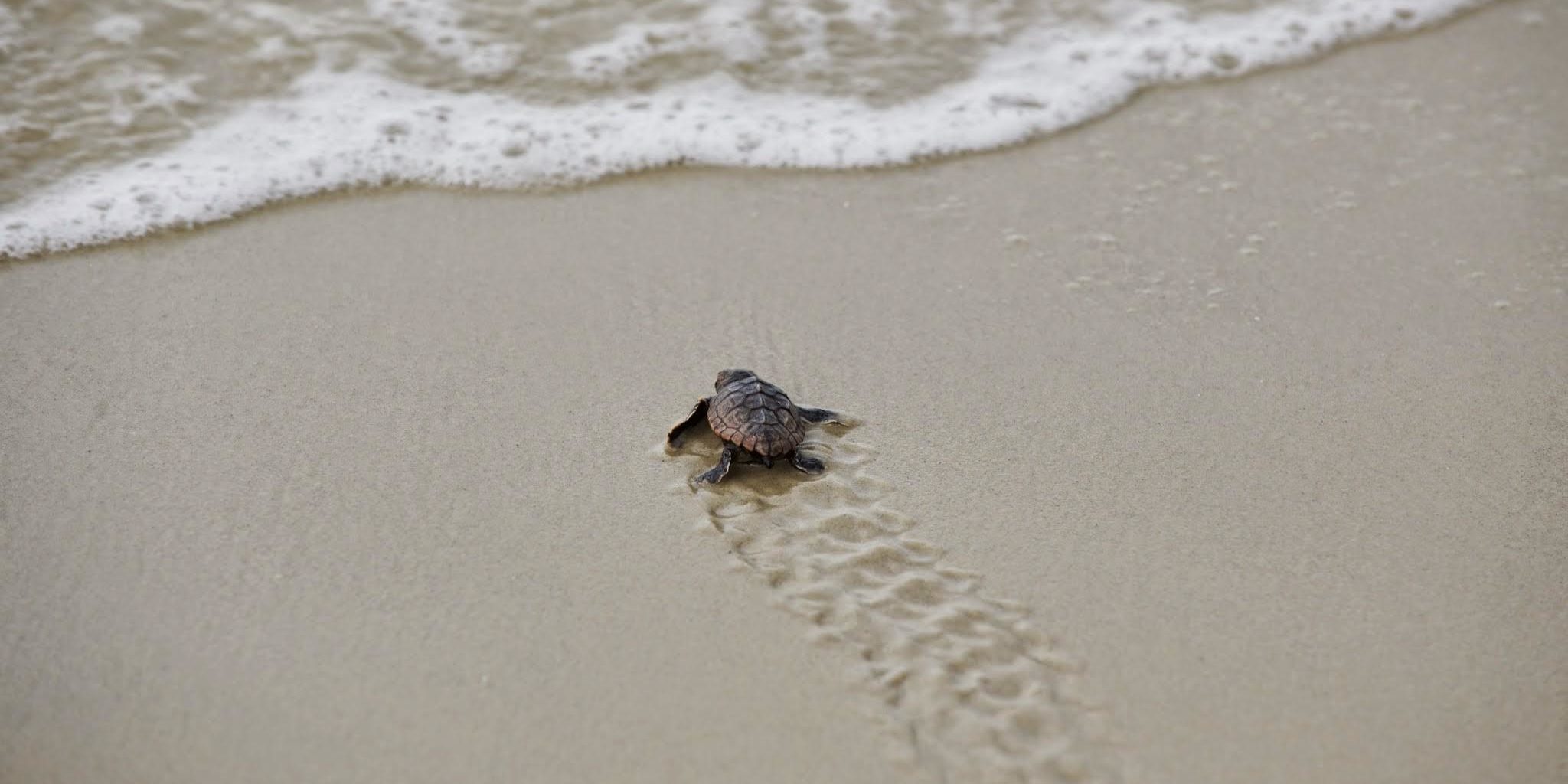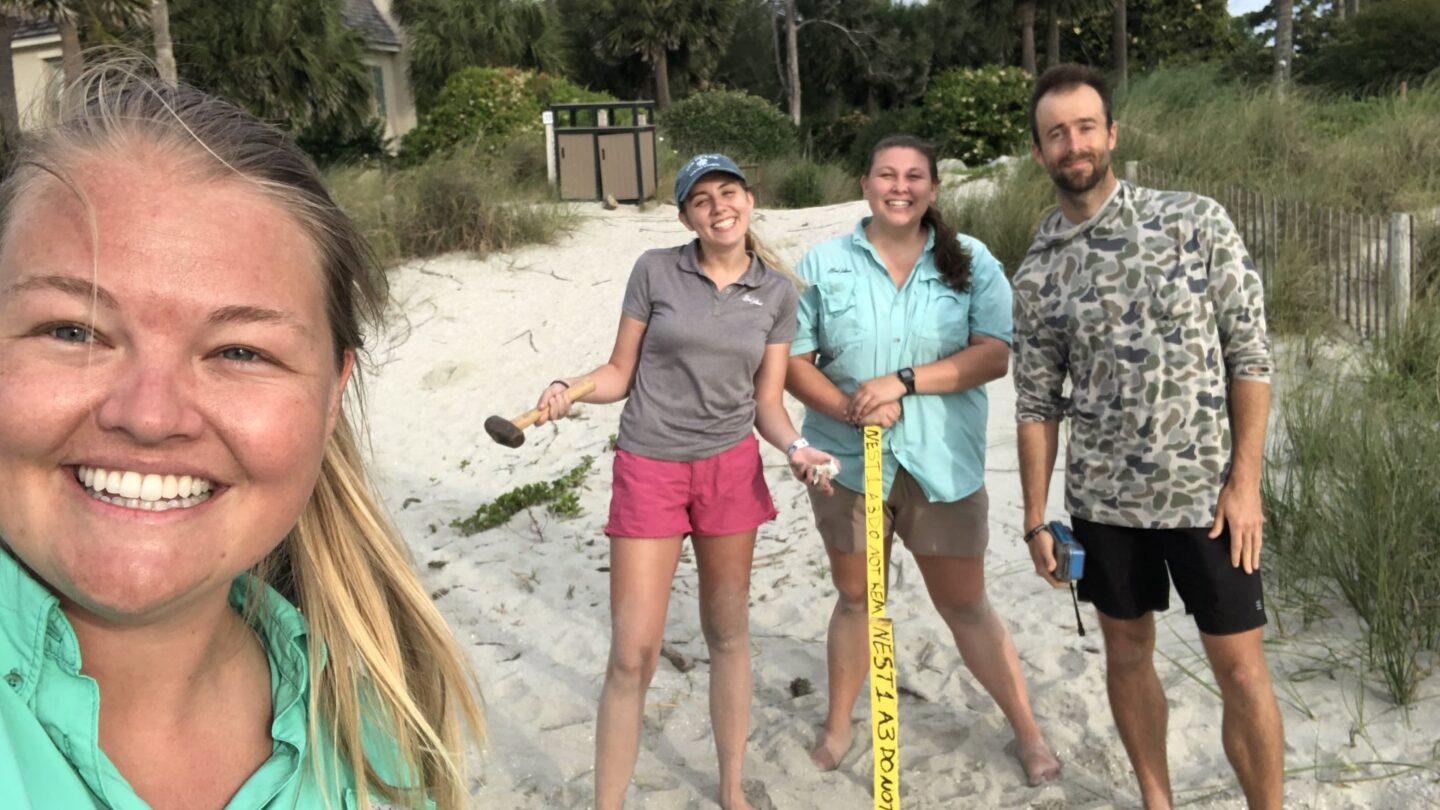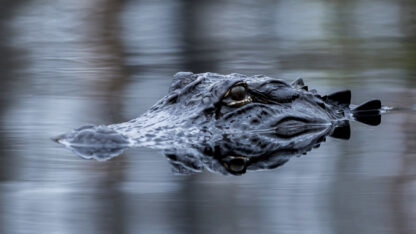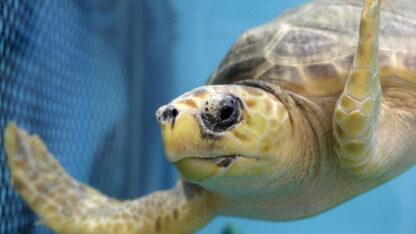Sea turtles begin nesting season in Georgia

JEKYLL ISLAND AUTHORITY File Photo
This coverage is made possible through a partnership with WABE and Grist, a nonprofit, independent media organization dedicated to telling stories of climate solutions and a just future.
Loggerhead sea turtles returned to nest on Georgia’s beaches this week. Teams surveying the beaches found five nests on Tuesday, four on Cumberland Island and one on Sea Island.
The turtles start nesting in early May every year.
But in the 1980s, so few loggerhead turtles were returning to Georgia, there was concern they might disappear. Conservation efforts since then have added up. In 2019, they laid a record 3,950 nests.
Experts say Georgia is due for another strong nesting season this summer. Turtle researchers have noticed a three-year cycle, where a banner year like 2019 is followed by two with more moderate nesting numbers. In 2020 and 2021, the loggerhead nest count came in under 3,000 — no cause for concern, according to scientists, but not setting records.
Wildlife biologist Mark Dodd with the Georgia Department of Natural Resources, who leads the state’s sea turtle program, said it’s all part of the turtles’ long path to recovery.
“If you allow a species like loggerheads that have delayed sexual maturity [and are] very long-lived to decline, it takes literally 100 years to recover the species,” Dodd said.

The turtles take about 30 years to reach sexual maturity and start laying eggs, so successful nesting seasons now are a result of conservation efforts in the 1990s.
Similarly, it will be another 30 years before turtles born now return to nest.
Dodd said that could mean another big jump in turtle nests in the 2040s and ’50s — assuming the turtles survive the many threats they face.
“You’re making a lot of assumptions,” he said. “And that is that levels of mortality from commercial fisheries or other human sources don’t change dramatically over that 30-year period.”
Climate change is driving temperatures worldwide higher and has varied and far-reaching effects on oceans and sea creatures, including turtles. It can affect their habitat and food supply. Sea turtles’ sex is determined by the temperature at which their eggs incubate, so warmer temperatures could skew the population. And the sea level on U.S. coastlines is expected to rise by 10 to 12 inches in the next 30 years, affecting the beaches where the turtles nest.
Given all that, it’s “probably not realistic” to assume things will stay the same for sea turtles,“ Dodd said.
“That’s why we spend a lot of time looking at sources of mortality, looking at climate change, trying to predict how that’s going to affect the population in the future and trying to mitigate those effects,” he said.








